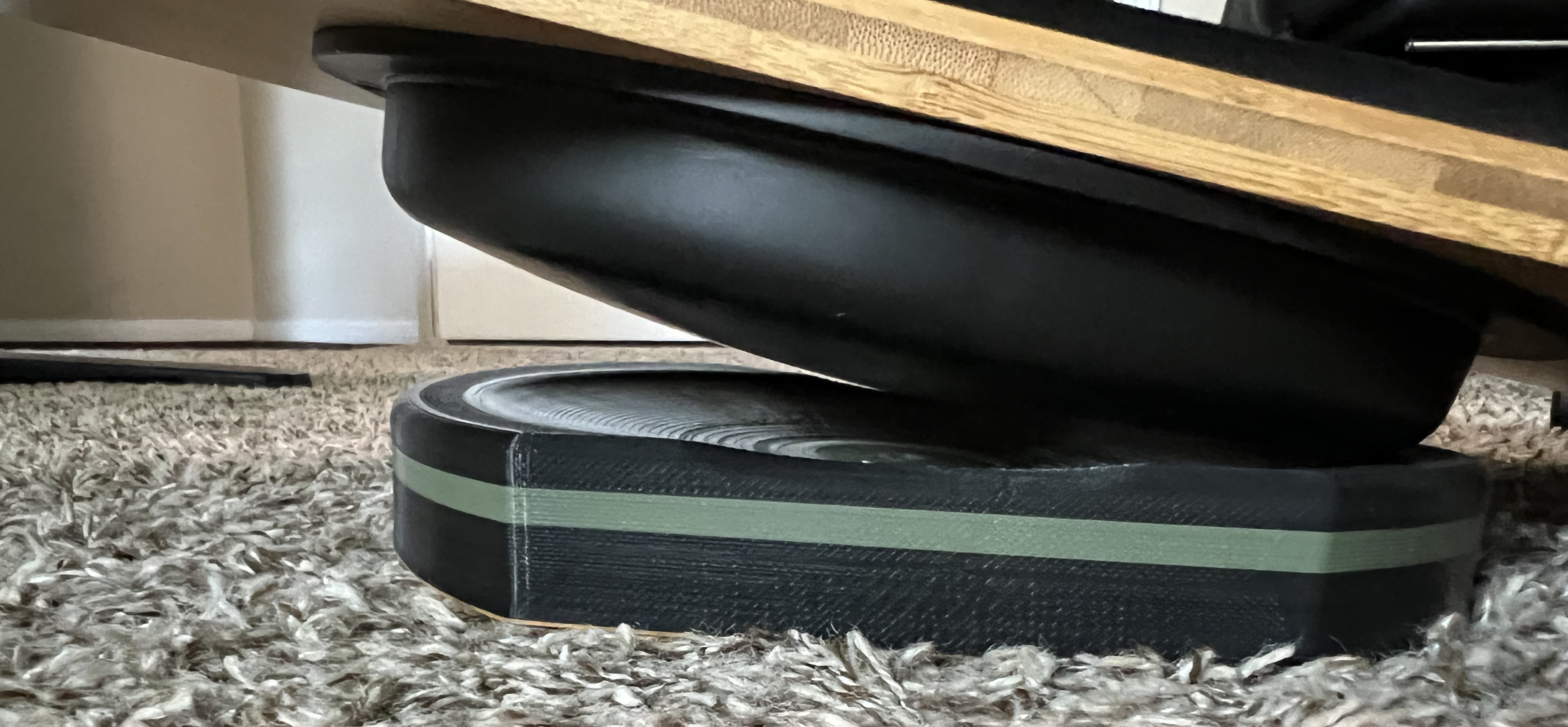
Uplift Desk Motion-X Board Stand - Annealed
prusaprinters
<h3>Uplift Desk Motion-X Board Stand</h3><p>The <a href="https://www.upliftdesk.com/bamboo-motion-x-board-by-uplift-desk/">Motion-X Board</a> is one of the accessories for the Uplift Desk; it's designed to help people engage more motion while standing at their standing desks. The board works best on flat surfaces like tile; on carpet there's a lot of resistance for things like turning. This stand is designed to sit underneath the Motion-X Board, retain it, and allow the person to turn and tilt it easily.</p><p> </p><p>I designed this using a 3D scan of the Motion-X Board's base, which seems to be an arbitrary curved form, to guide the design of the base. I wanted to simultaneously retain the board and make it difficult for it to slip off and also allow for a range of motion. The scan was taken with an iPhone 13's LIDAR and this is included in the files section, and a picture of the mesh is in the photos section.</p><p> </p><h3><strong>Key Dimensions</strong></h3><p>The stand is 33.771 mm high at its peak and the center of the Motion-X Board would sit 24.607 mm above the ground.</p><p> </p><h3><strong>Printing Advice and Sous Vide Annealing</strong></h3><p>I printed this with the intent to <a href="https://blog.prusa3d.com/how-to-improve-your-3d-prints-with-annealing_31088/">anneal it</a> using the <a href="https://www.justinmklam.com/posts/2017/06/sous-vide-pla/">sous vide annealing technique</a> which I wanted to do since this part needs to hold a human's body weight highly concentrated over a small surface area. I have tried to print this in the past with traditional strength settings (extra perimeters and top layers in this case) but after enough time the part would be damaged.</p><p> </p><p>The included slice is extremely dense at about 83% infill resulting in 1.3 kg of filament used. I did this for a few reasons: 1) higher infill density helps reduce warping from the annealing process, 2) I set this to try to get the overall part density to exceed the density of water to help the part sink steadily in the sous vide bin, and 3) while not as influential as perimeters, high infill does loan strength. Outside of this I used 0.20 mm layer height, 6 perimeters, 6 bottom layers, and 7 top layers. I wouldn't have increased the layer height more because the curvature at the top is already very shallow and smaller layer height helps express that.</p><p><br>If you don't want to use as much filament I would use the same settings mentioned in the last paragraph but use a more typical small infill density like 10-15%, but I would at least use a higher-strength material like PETG. If you have an advanced material like PC you may be able to dial these settings down a lot.</p><p> </p><p>For the annealing I used an Anova Sous Vide Precision Cooker set to 70 degrees Celsius for 7 hours. I removed the part once the water temperature had decreased to about 60 Celsius and let it cool in the air after that. I made a mistake while bagging the part and about half of it let some water into the bag; this shouldn't have been a critical problem though and in practice the part is holding up very well. In the close-up photos you can see the altered pattern on the surface which is due to the annealing process.</p>
With this file you will be able to print Uplift Desk Motion-X Board Stand - Annealed with your 3D printer. Click on the button and save the file on your computer to work, edit or customize your design. You can also find more 3D designs for printers on Uplift Desk Motion-X Board Stand - Annealed.
